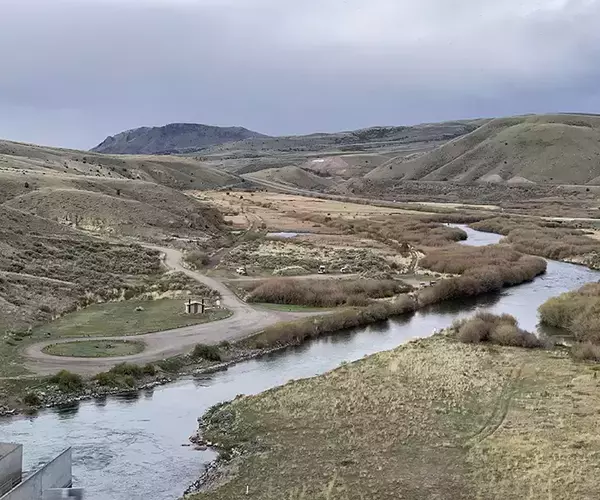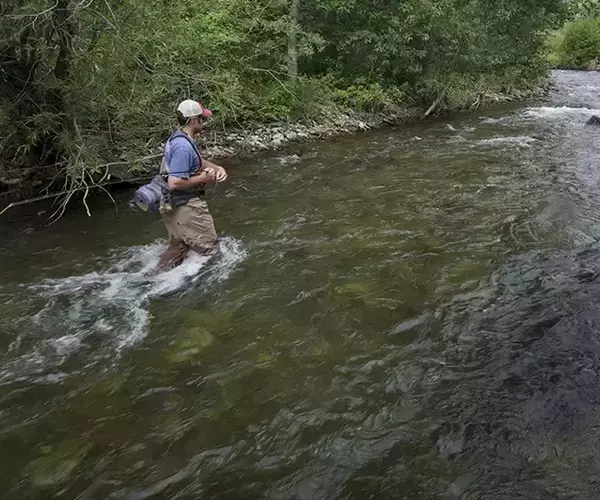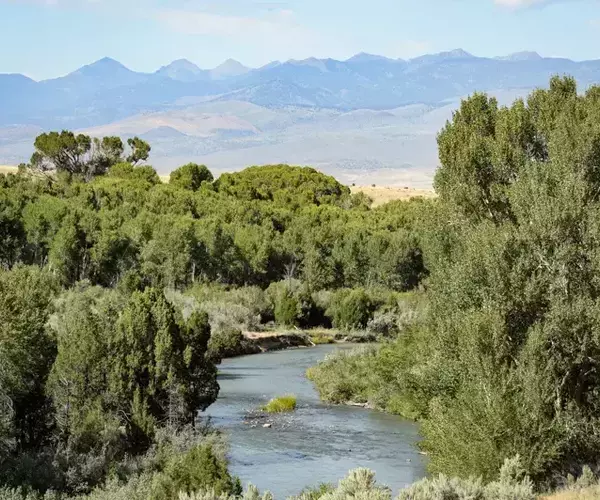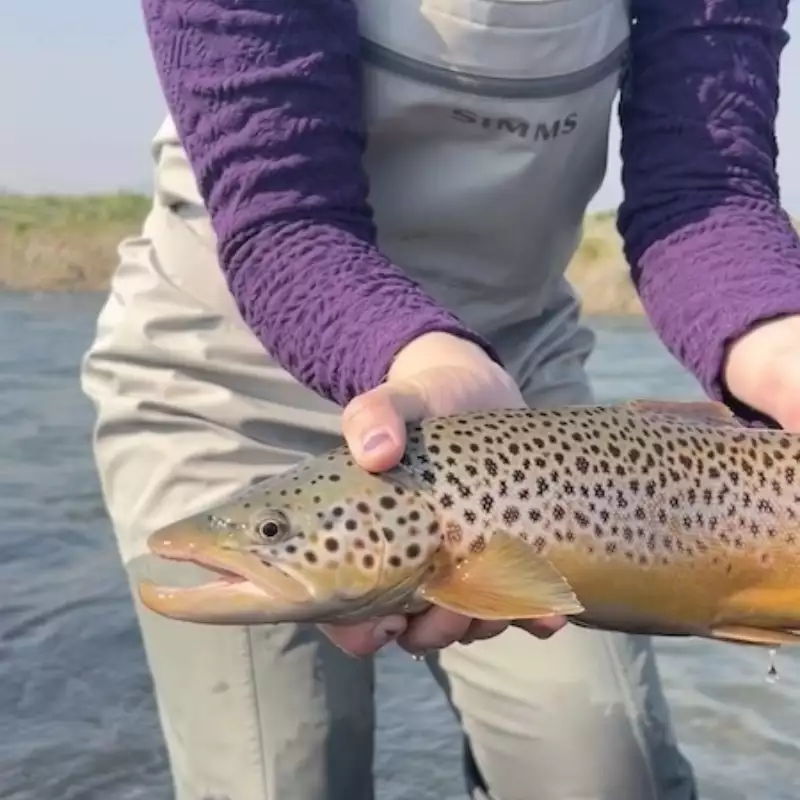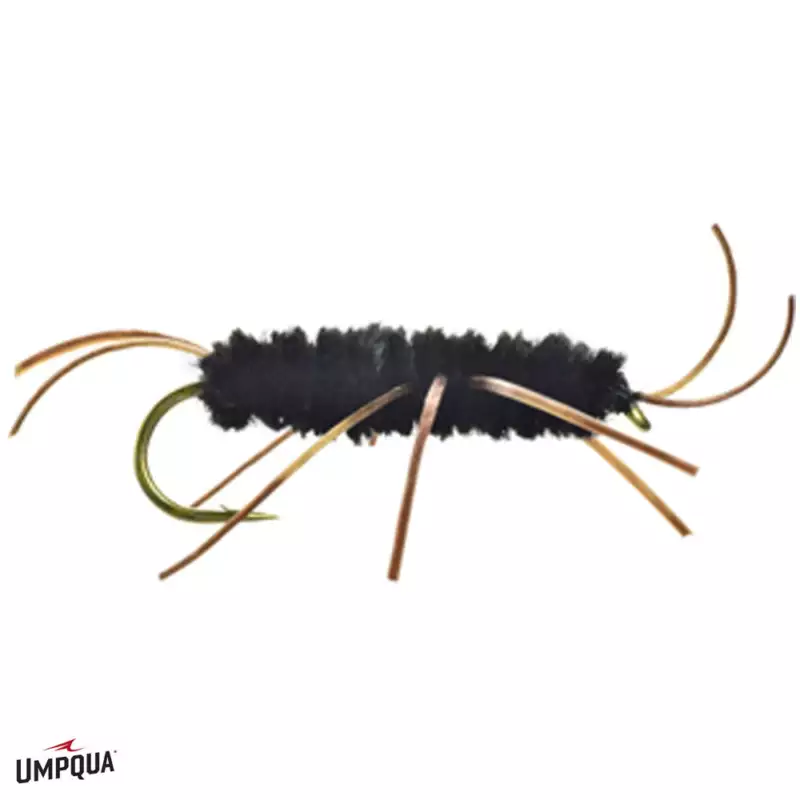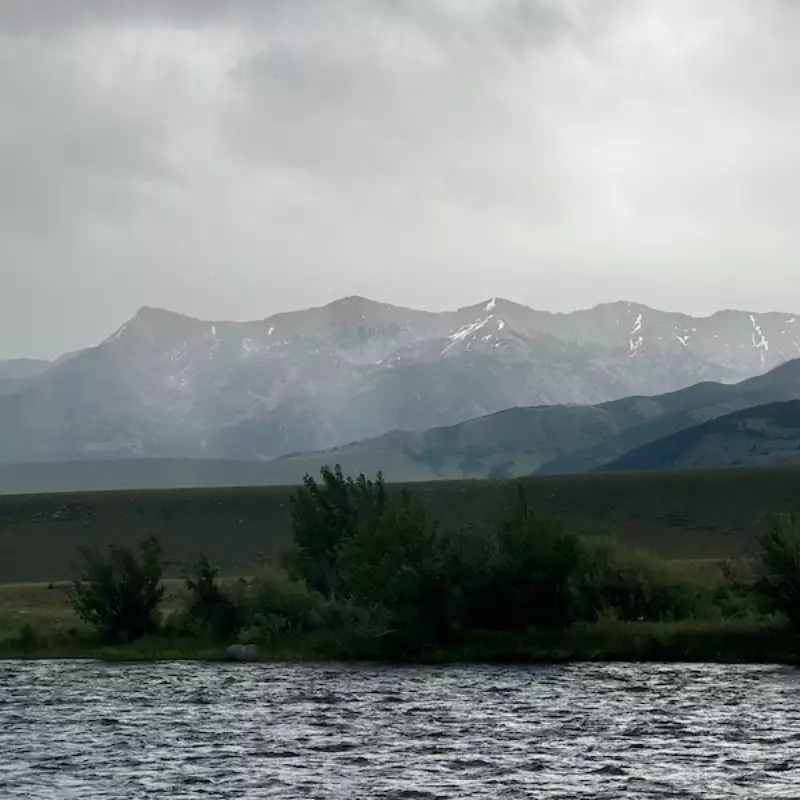9 Best Flies for Fly Fishing Montana in Fall
Posted by: Alex
Date: 10/18/2025
Fall in Montana means fewer people on the rivers and better fishing conditions overall. It’s the time of year when a well-thought-out fly box matters most. These are nine flies that work across the state for anyone fly fishing Bozeman or anywhere else in Montana during the fall.
Our Top Picks for Fly Fishing Montana in the Fall
Bozeman, Montana, fly fishing in the fall feels different than any other time of year. Fish activity in the area rivers slows down as the weather gets colder, and fish start holding in familiar spots again. It’s a season where slowing down pays off, and choosing the right flies makes all the difference.
Here are 9 of the most proven, time-tested fly patterns that are always in our guides' fly boxes this time of year - no matter where we are fly fishing in Montana.

1) RS2 Emerger
The RS2 Emerger is one of the best flies for fall fly fishing in Montana. When blue-winged olives start to hatch, trout focus on the emerging insects just below the surface. The RS2 is a great fly when you need to be sneaky and get the fly where fish feed without spooking them. It’s simple, easy to fish, and works consistently when trout are feeding near the surface in clear water.
It is a simple fly built with a slim thread body, sparse microfibers for a tail, and a small tuft from a pheasant philoplume or a CDC tuft for the wing. That clean design lets it sit just below the surface without trapping air, making it look like a struggling mayfly. It’s an unassuming fly, but that’s what makes it so good—there’s nothing flashy, just a perfect profile that trout trust.

2) BWO Sparkle Dun
The BWO sparkle dun is a go-to pattern during fall in Montana when blue-winged olives start to come off on cloudy afternoons. Trout feed confidently during these hatches, and this fly matches the moment perfectly. It rides low, has a realistic profile, and holds up well in softer water and slick tailouts. When the hatch gets heavy and fish are selective, the bwo sparkle dun is often the only thing they’ll eat.
Tied with a fine dubbing body, a trailing shuck of antron, and upright deer hair for the wing. That mix keeps the fly sitting low in the film while still being visible enough to track. The deer hair keeps it floating in rougher water, but the overall pattern stays delicate, just like a natural blue-winged olive trying to hatch.

3) Purple Haze
The purple haze is one of those flies that works year-round in Montana. It’s simple, easy to see, and covers a lot of different hatches when trout are looking up. On the right day, it can pass for a mayfly, a small attractor, or just something worth eating. It floats well, shows up in all kinds of light, and is a solid choice to keep tied on from morning to afternoon.
The purple haze is a spin on a parachute adams, tied with purple thread, a white post, and a mix of grizzly and brown hackle. The purple body gives it a touch of color that stands out in different light conditions without looking unnatural.

4) Mini Dungeon
Fall streamer fishing around Bozeman comes alive when the weather cools. The Mini Dungeon is a scaled-down version of the classic, easy to cast and heavy enough to get down. Olive, black, and yellow are all solid color choices. Fish it slow through deep runs or along the edges of structure where brown trout like to sit this time of year.
Made from a variety of materials, the sex dungeon consists of marabou, deer hair, and rubber legs to create a smaller, easier-to-cast version of the original dungeon streamer. The spun deer hair head pushes water, while the articulated body gives it a swimming motion that looks alive. It’s one of those patterns that makes fish react even when they aren’t feeding.
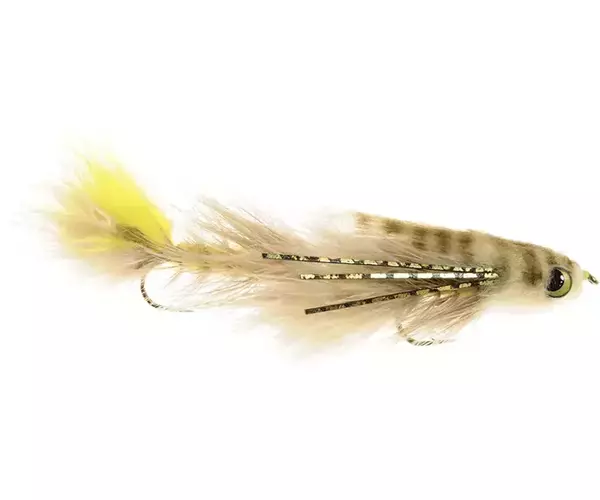
5) Double Gonga
The double gonga is a solid streamer for fall fishing in Montana. It’s heavy, pushes water, and gets the kind of reaction strikes that make this time of year so much fun. Olive, black, and tan versions all have their days, and it’s a fly that moves well whether you’re stripping fast or slow. On the Yellowstone River, it’s one of the most reliable patterns for finding aggressive brown trout in the fall.
Being an articulated streamer with heavy lead eyes, this fly gets deep fast. The front and rear sections move independently, giving it a wide, pulsing swim. It’s a big fly built to move big fish, and the materials hold up to aggressive strikes and heavy water.

6) Sparkle Minnow
The sparkle minnow is a dependable streamer for fall fishing in Montana. It’s flashy and undulates perfectly in the water column when fished properly. This fly works well when fishing during some cloud coverage or after a little rain. Stripped slowly through deeper runs, it’s a consistent producer for brown and rainbow trout all season long.
This fly combines a flashy tinsel body with marabou and soft synthetic fibers for movement. It’s tied on a strong hook with a lead or brass conehead for just enough weight to get down without being too heavy to cast. The pattern catches light in a way that mimics a wounded baitfish, which makes it effective in almost any water clarity.

7) Micro May
The micro may is one of the best, small nymphs to fish in the fall around Montana. It matches the small mayflies that trout key in on this time of year and sinks fast enough to stay in the zone. Olive and brown are steady colors, and it’s a great dropper behind a larger fly like a rubberleg or San Juan worm. On the Gallatin River and Upper Madison rivers, it’s a dependable fly when fish get a little more selective later in the season.
Tied with a slender thread body, fine ribbing, and a small flashback strip over the thorax. It’s a modern take on a mayfly nymph that matches the small bugs trout key in on throughout fall. The extra wide hook gap of the TMC 2488H hook holds big fish like few others

8) Shop Vac
The shop vac is a simple fly that keeps producing throughout the fall and winter months. It’s light, quick to sink, and has just enough flash to grab attention without overdoing it. In the fall, it fishes well as a dropper behind a heavier fly. It’s an excellent pattern for clear water and a reliable choice when trout are feeding on small caddis or midge pupa.
This fly has a simple wrapped phesanat tail body, wire rib, and a touch of flash under the wing case. A small bead adds both weight and visibility underwater. It’s not flashy, but it looks just enough like everything trout eat to be effective in a variety of scenarios.

9) Zebra Midge
As the water cools down, midges become the primary hatching insect. The zebra midge is simple but effective, especially in slower pockets and tailouts. Black and red are standard, with olive being a good option on brighter days. Sizes 16-18 are right for most fall fishing around Bozeman. It’s a great trailing fly behind a heavier nymph like a prince nymph or pheasant tail.
Tying the zebra midge is about as straightforward as it gets: a thread body, fine wire ribbing, and a small silver or copper bead. That minimalist has the right weight and shine to imitate a drifting midge perfectly.
Fall Fly Fishing in Montana
Fall fishing in Montana is different from the rest of the year. The days start cold, the fish move more slowly, and success often comes down to patience. Focus on slower seams, deeper runs, and softer edges where trout conserve energy. Adjust weight often, keep your drifts clean, and give every spot a few extra passes.
Fly fishing in Bozeman and the surrounding rivers in the fall is as good as it gets for the experienced angler. The water’s clear, the fish are healthy, and crowds are sparse. With this simple lineup of flies, you’ll be set for steady days on the water no matter which stretch of river you end up on.

